1. Overview
Anna Ioannovna, also known as Anna Ivanovna, ruled as Empress of Russia from 1730 to 1740, following a period as regent of the Duchy of Courland from 1711. Her reign marked a complex period in Russian history, characterized by the assertion of autocratic power against attempts to limit the monarchy and a continued, albeit slower, embrace of Westernization initiated by her uncle, Peter the Great. While some Western historians view her era as a transitional phase towards a European court, within Russia, her reign is often critically referred to as a "dark era," highlighting concerns about political repression, the significant influence of foreign advisors, particularly Ernst Johann von Biron, and social issues such as the tightening of serfdom. Despite significant military successes in foreign policy and cultural advancements like the establishment of the Russian Ballet, her rule was widely unpopular due to its severity, alleged cruelty, and the suffering inflicted upon the populace through warfare and harsh governance.
2. Early Life and Background
Anna Ioannovna's formative years were shaped by a disciplined upbringing and the contrasting environments of her mother's austere household and her uncle Peter the Great's burgeoning imperial court.
2.1. Birth and Family
Anna was born in Moscow on February 7, 1693, as the daughter of Tsar Ivan V of Russia and his wife, Praskovia Saltykova. Her father, Ivan V, co-ruled Russia with his younger half-brother, Peter the Great. However, Ivan V was reported to have an mental disability and limited capacity for effective administration, leaving Peter to effectively rule alone. Ivan V died in February 1696 when Anna was just three years old, making her half-uncle Peter the sole ruler of Russia. Anna had two surviving sisters: an elder sister, Catherine Ivanovna of Russia, born in 1691, and a younger sister, Praskovia Ivanovna of Russia, born in 1694.
2.2. Childhood and Education
The three girls were raised in a disciplined and austere manner by their widowed mother, Praskovia Saltykova, who was known as a stern lady of sterling character. Born into a family of relatively modest means, Praskovia had been an exemplary wife to a mentally disabled man and expected her daughters to uphold her high standards of morality and virtue. Anna grew up in an environment that prioritized womanly virtue and domesticity, emphasizing thrift, charity, and religious observances. Her education was comprehensive for the time, including French, German, religious texts, and folklore, complemented by music and dancing. As she matured, Anna developed an obstinate personality with a mean streak, earning her the nickname "Iv-anna the Terrible." She was also noted for her large cheeks, which, as Thomas Carlyle remarked, were "comparable to a Westphalian ham".
Eventually, her uncle Peter the Great ordered the family to relocate from Moscow to Saint Petersburg. This move significantly impacted Anna, as it entailed a drastic change in both location and social environment. She found great enjoyment in the splendor and lavishness of the imperial court and high society, a stark contrast to the austerity her mother preferred.
2.3. Courland Regency
In 1710, at the age of 17, Peter the Great arranged Anna's marriage to Frederick William, Duke of Courland, who was of a similar age. Their wedding, held on November 11, 1710, was a grand affair, aligning with Anna's inclinations. Her uncle provided a substantial dowry of 200.00 K RUB. The wedding feast featured a memorable performance where two dwarfs emerged from enormous pies and danced on the tables as a parody.
The newly wedded couple spent several weeks in Russia before departing for Courland. However, tragedy struck just 20 mile outside Saint Petersburg on January 21, 1711, when Duke Frederick died suddenly. The cause of his death remained uncertain, attributed variously to a chill or the effects of alcohol. After her husband's death, Anna proceeded to Mitau (now Jelgava), the capital of Courland (now western Latvia), where she governed the province for nearly two decades, from 1711 to 1730. During this period, the Russian resident, Pyotr Bestuzhev-Ryumin, served as her advisor and, at times, her lover. Anna never remarried, though her enemies claimed she maintained a long-term love affair with Ernst Johann von Biron, a prominent courtier.
3. Accession to the Throne
Anna's ascension to the Russian throne was marked by a complex succession crisis and a power struggle with the powerful Supreme Privy Council, which she ultimately overcame to re-establish autocratic rule.

3.1. Succession Crisis
In 1730, Tsar Peter II of Russia, grandson of Anna's uncle Peter the Great, died young and childless. His death extinguished the male line of the Romanov dynasty, which had ruled Russia for over a century since 1613. With the male line extinct, four female candidates emerged for the throne: the three surviving daughters of Ivan V of Russia-Catherine Ivanovna of Russia (born 1691), Anna herself (born 1693), and Praskovia Ivanovna of Russia (born 1694)-and the sole surviving legitimate daughter of Peter the Great, Elizabeth of Russia (born 1709).
As Ivan V had been the older brother and co-ruler with Peter the Great, his daughters could be considered to have a prior claim to the throne. However, another perspective argued that the successor should be the nearest kin to the most recent monarch, Peter II, which would favor Peter the Great's daughters, as they were Peter II's aunts. This dilemma was further complicated by the fact that Peter the Great's daughters were born out of wedlock, only later legitimized after his formal marriage to their mother, Catherine I of Russia, who had previously been a maid in his household. In contrast, Praskovia Saltykova, Ivan V's wife, was a nobleman's daughter, a devoted wife, and mother, and was highly respected for her many virtues, including her chastity, lending greater legitimacy to Ivan V's daughters.
3.2. Supreme Privy Council's Choice and Conditions
Ultimately, the Supreme Privy Council of Russia, led by Prince Dmitry Mikhailovich Golitsyn the Elder, chose Anna, the second daughter of Ivan V, to be the new Empress. She was selected over her elder sister Catherine, despite Catherine being resident in Russia at the time while Anna was not. Several reasons influenced this decision: Anna was a childless widow, which the Council believed would prevent the immediate threat of an unknown foreigner wielding power in Russia through marriage. She also possessed some governmental experience from having administered her late husband's Duchy of Courland for almost two decades. Catherine, on the other hand, was married to Karl Leopold, Duke of Mecklenburg-Schwerin. Although separated from him and living in Russia, her husband's existence could pose problems, particularly at her coronation, and his intervention in government affairs later could not be prevented, especially since Catherine had a daughter by him. As an experienced ruling prince of ancient lineage, he would likely be less amenable to the Council's advice. The certainty of succession provided by Catherine's daughter was also something the nobles perhaps wished to avoid.
The Supreme Privy Council favored the childless and widowed Duchess of Courland, hoping she would feel indebted to the nobles and remain a malleable figurehead. To ensure this, the Council compelled Anna to sign a declaration of "Conditions" upon her accession, modeled after a Swedish precedent. These Conditions stipulated that Anna was to govern strictly according to the Council's counsel. She was expressly forbidden from declaring war, making peace, imposing new taxes, or spending state revenue without their consent. Furthermore, she could not punish nobility without trial, grant estates or villages, appoint high officials, or promote anyone (foreign or Russian) to court office without the Council's approval.
The Council's deliberations took place while Peter II was dying of smallpox in the winter of 1729-1730. The document of Conditions was presented to Anna in January 1730, and she signed it on January 18, 1730, around the time of Peter II's death. The endorsement ceremony was held in her capital, Mitau in Courland, before she traveled to the Russian capital.
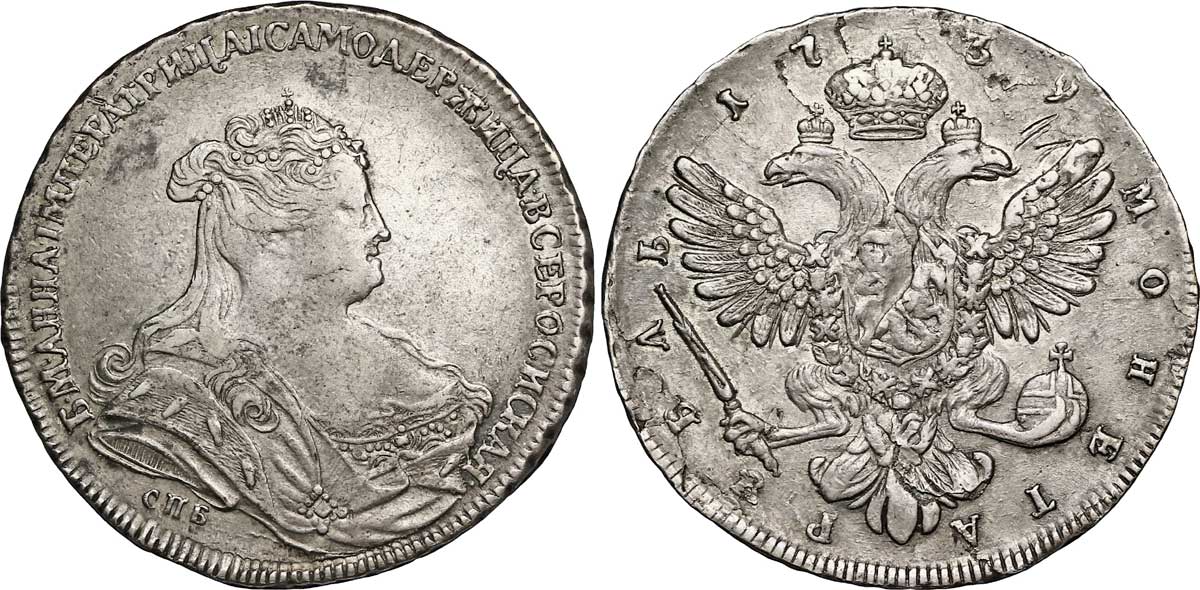
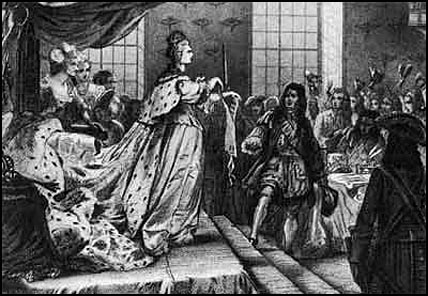
3.3. Repudiation of Conditions and Restoration of Autocracy
Shortly after her arrival in Russia on February 20, 1730, Empress Anna exercised her prerogative by immediately dissolving the Supreme Privy Council that had stipulated the restrictive "Conditions." This body had been composed largely of members from the Dolgorouki and Galitzin princely families. Within days, a new faction emerged at court, opposing the dominance of these two powerful families. On March 7, 1730, a group from this faction, numbering between 150 and 800 people depending on the source, arrived at the palace and petitioned the Empress to repudiate the Conditions and assume the full autocracy of her predecessors. Among those who urged Anna to do so was her elder sister, Catherine.
Anna promptly repudiated the document of Conditions, symbolically tearing it up. To underscore her assertion of power, she sent some of the document's framers to the scaffold and many others to Siberia. She then assumed autocratic powers, ruling as an absolute monarch in the same manner as her predecessors. On the night Anna tore up the Conditions, an aurora borealis appeared in the sky, making the horizon "appear in all blood" in the words of one contemporary. This phenomenon was widely interpreted as a dark omen for what Anna's reign would entail.
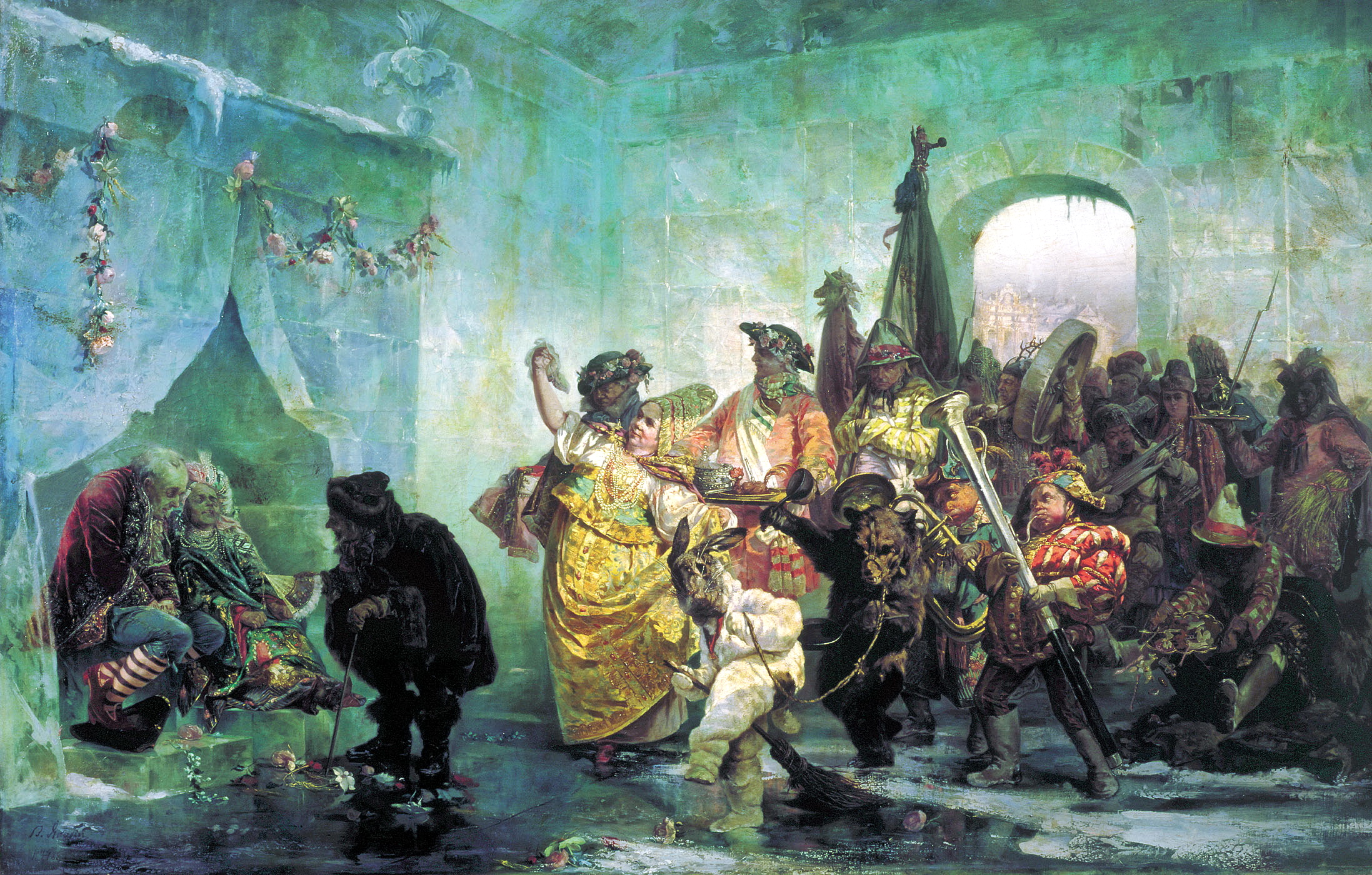
Anna, described as strong-willed and eccentric, was also known for her cruelty and vulgar sense of humor. She famously compelled Prince Mikhail Alekseevich Golitsyn to serve as her Court jester and arranged his marriage to her unattractive Kalmyk maid, Avdotya Buzheninova. To commemorate this wedding, the Empress commissioned the construction of an elaborate Ice palace measuring 33 ft high and 80 ft long, complete with icy beds, steps, chairs, windows, and even ice logs in an ice fireplace. Prince Golitsyn and his bride were famously paraded through the streets in an cage atop an elephant to this frozen structure, where they were forced to spend their wedding night during an extremely cold winter night. Empress Anna reportedly told the couple to "make love and keep their bodies close" if they wished to avoid freezing to death. The couple ultimately survived when the maid traded a pearl necklace for a sheepskin coat from one of the guards. An enthusiastic hunter, Anna often kept a shotgun by her window, ready to shoot at birds whenever she felt the urge.
4. Reign as Empress of Russia (1730-1740)
Anna's ten-year reign was a period of significant domestic and foreign policy shifts, administrative reorganizations, and cultural developments, often influenced by powerful foreign advisors.
4.1. Government and Administration
Upon consolidating her power, Anna established a cabinet and relied heavily on foreign advisors, particularly Baltic Germans. Her lover, Ernst Johann von Biron, a Baltic German, wielded significant influence, leading to Baltic Germans being favored with government offices. This favoritism fostered resentment among the ethnic Russian nobility, although the American historian Walter Moss cautioned that the popular image of the BironovschinaRussian (Age of Biron) as one of total Baltic German domination is exaggerated. Other influential figures included Andrei Osterman and Burkhard Christoph von Münnich, both of German origin, who had risen through the ranks under Peter the Great. While these figures aimed to prevent German oligarchic rule and often opposed each other, the perception of German control over the government persisted due to Anna's deep distrust of Russians. She frequently granted Germans high-ranking positions in her cabinet and other critical decision-making roles, contributing to widespread resentment among the Russian population. Anna also moved the capital back to Saint Petersburg in 1732.
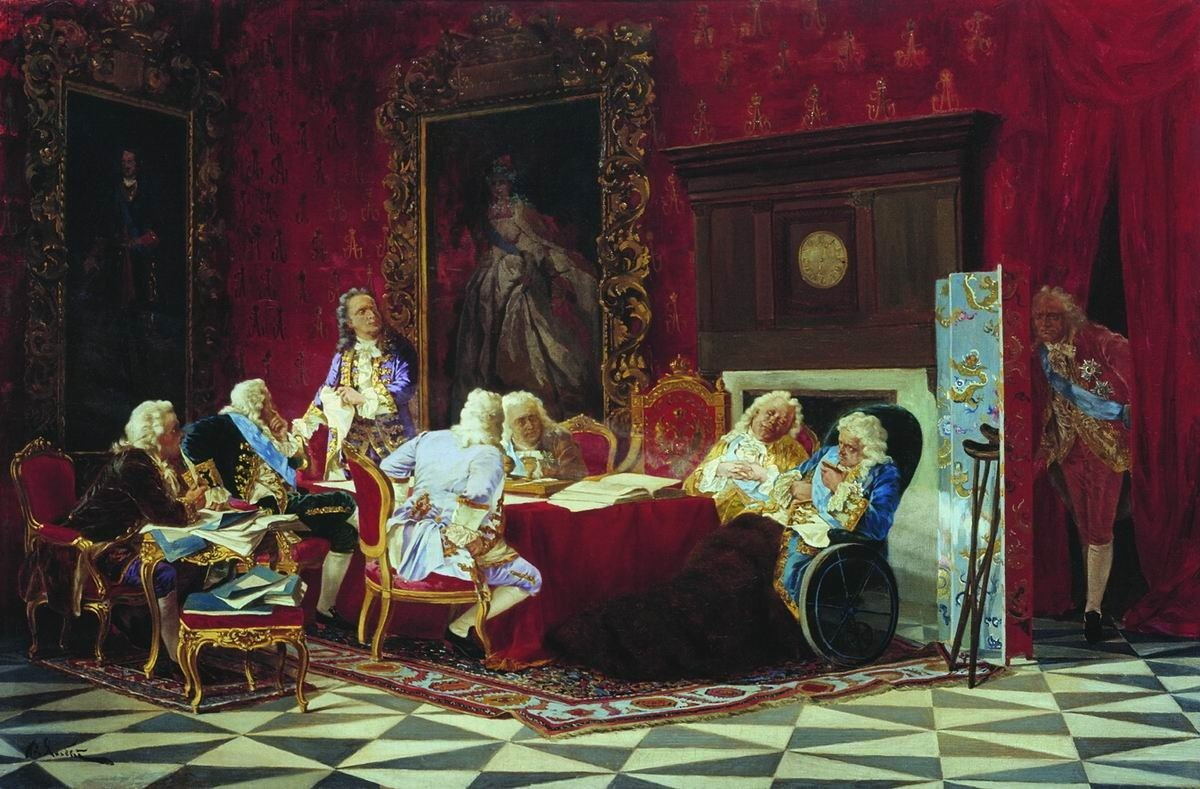
4.2. Political Repression and Secret Police
Anna's reign saw the resurrection of the Secret Office of Investigation, an institution tasked with punishing individuals convicted of political crimes, though it occasionally handled non-political cases. It was rumored that Biron was the power behind this office, but it was in fact run by Senator A. I. Ushakov. The punishments meted out by the Secret Office were often exceedingly painful and gruesome. For instance, individuals accused of plotting against the government were subjected to beatings with the knout and had their noses slit. Russian authorities recorded approximately 20,000 Russians, including some of the highest native nobility, as victims of this police apparatus during Anna's reign. This period is marked by severe suppression of dissent and significant human rights abuses.
4.3. Nobility Policies and Social Structure
Anna's policies granted numerous privileges to the nobility. In 1730, she ensured the repeal of Peter the Great's primogeniture law, which had prohibited the division of estates among heirs, thus allowing noble families to subdivide their property. Starting in 1731, landlords were made responsible for their serfs' taxes, a measure that further tightened the economic bondage of the serf population. In 1736, the age at which a noble was required to begin compulsory state service was set at 20, with a service period of 25 years. Additionally, Anna's government decreed that if a noble family had more than one son, one could remain behind to manage the family estate, rather than all sons being compelled into service. In 1731, Anna also founded the Cadet Corps, a military school for young noble boys starting at the age of eight, providing them with rigorous training for important military positions. This institution later incorporated arts and sciences into its curriculum under subsequent rulers.
4.4. Education, Culture, and Westernization
Anna continued to fund the Russian Academy of Sciences, an institution established by Peter the Great with the aim of advancing sciences in Russia to match Western European standards. Subjects taught included mathematics, astronomy, and botany. The Academy also sponsored numerous expeditions, such as the notable Bering Sea Expedition, which not only sought to determine if America and Asia were once connected (possibly via Beringia) but also extensively studied Siberia and its indigenous peoples. These studies became significant reference points long after the expedition's return. However, the Academy often faced interference from external parties, with the government and the church frequently meddling with funding and experiments, sometimes altering data to align with their respective viewpoints.
The Academy of Sciences remained relatively small, never exceeding 12 students in the university section and barely over a hundred in the secondary school. Nevertheless, it represented a significant step forward for education in Russia. Many teachers and professors were recruited from Germany, introducing a Western perspective to the students. Some of these students, taught by German professors, later became advisors or tutors to future leaders, such as Catherine the Great's tutor, Adodurov. During Anna's reign, the Academy of Sciences expanded its curriculum to include the Arts, as no dedicated arts school existed at the time, and the Empress was a strong supporter of the arts. Theatre, architecture, engraving, and journalism were all added to the program. It was during this period that the foundation for what is now the world-famous Russian ballet was laid, with the Imperial Theatre School being founded on May 4, 1738, through the initiative of French ballet master Jean-Baptiste Landé. This was Russia's first ballet school and the second in the world.
Westernization, though at a slower pace than under Peter the Great, continued to evolve during Anna's rule, particularly in areas like the Academy of Sciences, Cadet Corps education, and imperial culture, including theatre and opera. This expansion of knowledge primarily influenced the nobility. The success of this Westernization is often attributed to the efforts of German court nobility, with the impact of foreigners viewed both positively and negatively. Anna's court notably consisted almost entirely of foreigners, predominantly Germans. This was partly due to her deep distrust of Russians, leading her to appoint Germans to key government and decision-making positions, which in turn fueled resentment among the Russian populace.
4.5. Religious Policy
In 1740, Anna's government established the Office for the Affairs of New Converts, situated in the Bogoroditsky Monastery in Kazan, with the aim of expanding conversions to Orthodoxy. Staffed by monks and supported by state authorities, this office oversaw a significant increase in conversions under the Empress's decree. Converts were incentivized with goods and cash as "rewards for accepting baptism." However, intimidation and violence were also employed in the conversion process; for instance, a Chuvash petition described clergy "mercilessly beat[ing] them and baptiz[ing] them against their will." Furthermore, hundreds of mosques were destroyed during this period. By the 1750s, over 400,000 pagans and Muslims had converted.
Anna also directed the creation of a national logging ban for forest protection and intensified crackdowns on heresy to preserve the purity of the Russian Orthodox Church. As part of this effort, seminaries were opened in 16 Russian cities, and in 1735, a decree was issued making blasphemy punishable by death.
4.6. Foreign Affairs and Military Policy
Anna's reign saw Russia's involvement in two major conflicts: the War of the Polish Succession (1733-1735) and the Russo-Turkish War (1735-1739). In the Polish Succession War, Russia cooperated with the Austrian Empire to support Augustus II's son, Augustus III, against the candidacy of Stanisław Leszczyński, who was backed by France and allied with Sweden and the Ottoman Empire. Russia's involvement in this conflict was brief.
The Russo-Turkish War (1735-1739) proved to be far more significant. In 1732, Nader Shah of Persia had compelled Russia to return lands in northern mainland Persia that had been seized during Peter the Great's Russo-Persian War (1722-1723). The Treaty of Resht further formalized an alliance against the Ottoman Empire, a common enemy, and the provinces of Shirvan, Ghilan, and Mazanderan had been a net financial drain on the imperial treasury during their occupation. Three years later, in 1735, in accordance with the Treaty of Ganja, the remaining territories taken from Persia in the North Caucasus and South Caucasus more than a decade earlier were also returned.
The war against the Turks lasted four and a half years, cost 100,000 men, and millions of rubles, causing immense stress on the Russian populace. Despite the high cost, Russia gained only the city of Azov and its environs. However, the long-term effects were more substantial than they initially appeared. Osterman's policy of southern expansion prevailed over Peter the Great's 1711 Peace of the Pruth. General Burkhard Christoph von Münnich led Russia's first successful campaign against the Ottomans, dispelling the illusion of Ottoman invincibility and demonstrating that Russian grenadiers and hussars could defeat twice their number of Janissary and Spahi troops. The Crimean Tatar hordes were largely suppressed, and these unexpected successes significantly boosted Russia's prestige within Europe. The Russians also established a protectorate over the khan of the Kirghiz, sending officers to aid in his brief conquest of Khiva.
Notably, two Chinese embassies from the Qing Dynasty visited Anna's court-first in Moscow in 1731, then in Saint Petersburg the following year. These were the only embassies China dispatched to Europe throughout the 18th century, and they were unique in that Chinese imperial officials performed the kowtow before a foreign ruler on these occasions.
4.7. Relationship with Biron
After being widowed just weeks after her wedding, Anna never remarried. As Empress, she enjoyed the power she held over all men and may have believed that marriage would undermine her authority. Nonetheless, Anna's reign is frequently referred to as "The Age of Biron" (BironovschinaRussian), named after her German lover, Ernst Johann von Biron. Historians largely agree that Biron exerted a strong influence on Anna's domestic and foreign policies, sometimes even wielding power independently of the Empress. While Anna was drawn to Biron's personal charm and found him to be a good companion, his name became synonymous with cruelty and terror in public perception, defining the negative hallmark of Anna's reign. In 1737, Biron was also appointed Duke of Courland.
4.8. Court Life and Personal Tendencies
Anna's court was characterized by extravagance and her unusual personal tendencies. She indulged in gambling and hunting, famously keeping a shotgun by her window to shoot at birds whenever the impulse struck. Her personality was marked by cruelty and a vulgar sense of humor. She would humiliate individuals with disabilities and forced Prince Mikhail Alekseevich Golitsyn to become her Court jester, compelling him into a marriage with her Kalmyk maid, Avdotya Buzheninova.
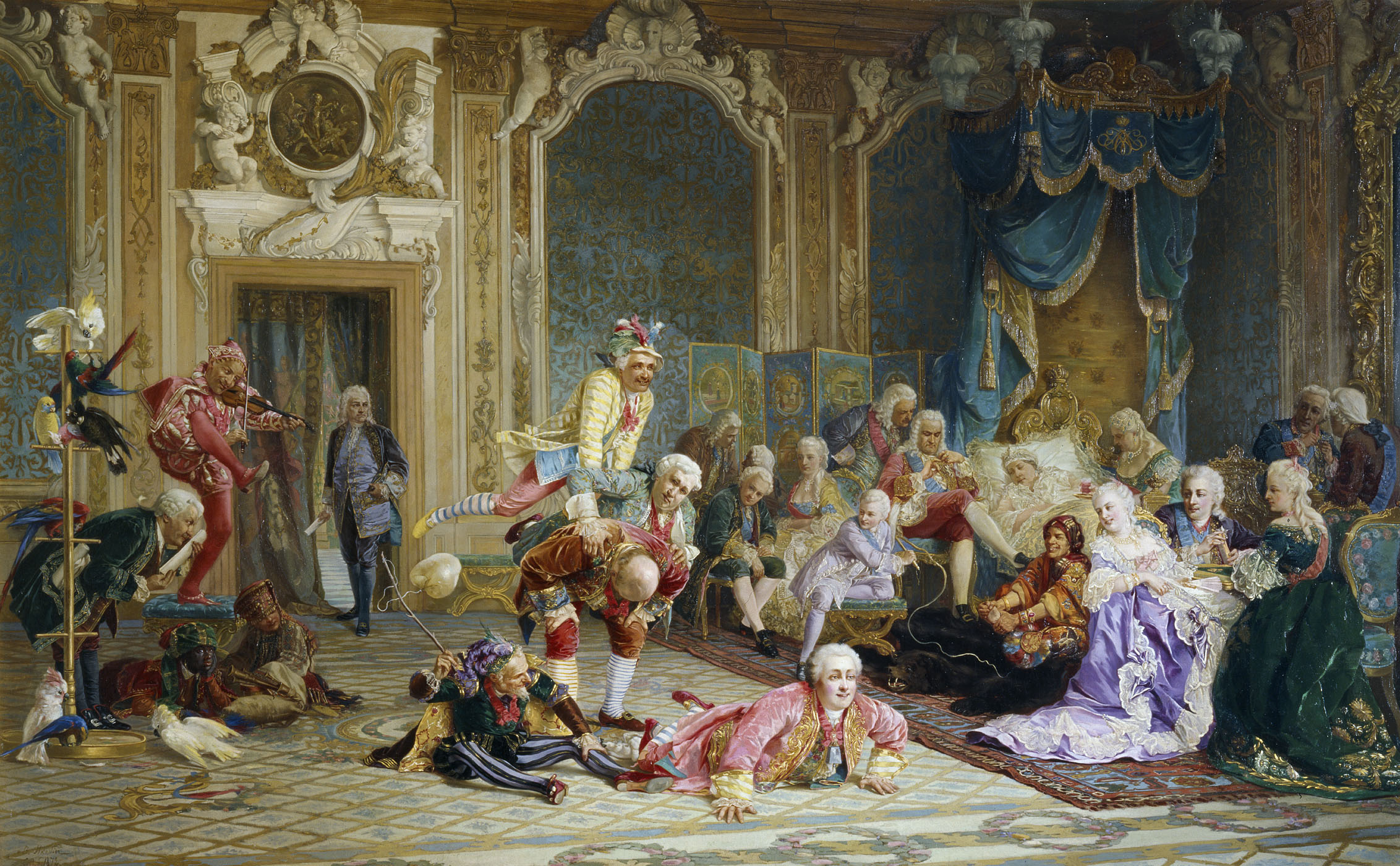
One of the most notable examples of her eccentric and grotesque tastes was the construction of an opulent Ice palace on the frozen Neva River in 1739 to celebrate a military victory in Central Asia. This Palladian-style structure, built at a colossal cost of 30.00 K RUB, was 33 ft high and 80 ft long, adorned with ice sculptures. Its garden trees, bathroom, and furniture were all made entirely of ice, with ice logs even placed in an ice fireplace. Prince Golitsyn and his bride were famously paraded through the streets in an cage atop an elephant to this frozen structure, where they were forced to spend their wedding night during an extremely cold winter night. Empress Anna reportedly told the couple to "make love and keep their bodies close" if they wished to avoid freezing to death. They survived only when the maid exchanged a pearl necklace for a sheepskin coat from a guard. Despite its grandeur, the ice palace, like many of Anna's lavish architectural projects (with the exception of some in Courland), no longer exists, having melted the year after her death.
Anna was active in bringing Western culture to Russia, inviting Italian theatre troupes and musicians. However, she often treated these artists more like court jesters than respected performers.
5. Death and Succession
As her health deteriorated, Empress Anna designated her grandnephew, Ivan VI of Russia, as her successor and appointed Biron as regent. This decision was a deliberate attempt to secure the line of her father, Ivan V, and explicitly exclude the descendants of Peter the Great from inheriting the throne. Records indicate she suffered from a kidney ulcer and continued to experience gout attacks. Her condition worsened significantly over time.
Anna died on October 28, 1740, at the age of 47, from a kidney stone that led to a slow and painful demise. Her final words were reportedly focused on Biron. At the time of Anna's death, Ivan VI was only a two-month-old infant. His mother, Anna Leopoldovna, who was the daughter of Catherine Ivanovna (Anna's elder sister), was widely disliked due to her German advisors and relatives. Consequently, shortly after Anna's death, Elizabeth Petrovna, the legitimized daughter of Peter the Great, successfully garnered popular support. She imprisoned Ivan VI in a dungeon and exiled his mother. Anna was buried three months later, on January 15, 1741, leaving Russia's future uncertain, and her dream of continuing Ivan V's direct line on the throne ultimately unfulfilled by Elizabeth's coup.
6. Legacy and Evaluation
Anna Ioannovna's reign continues to be a subject of varied historical interpretation, marked by both achievements and significant criticism regarding its social and political consequences.
6.1. Historical Evaluation
In Western historiography, Anna's reign has traditionally been viewed as a continuation of Russia's transition from the old Muscovy ways towards the European court envisioned by Peter the Great. This perspective often highlights her contributions to the ongoing Westernization process. In contrast, within Russia, Anna's reign is frequently characterized as a "dark era." This negative assessment is largely influenced by 19th-century Russian historians like Nikolai Karamzin and Vasily Klyuchevsky, who severely criticized her rule, sometimes labeling it the "dark 10 pages of Russian history."
6.2. Criticism and Controversy
Anna's unpopularity stemmed significantly from perceived flaws in her personality and her actions toward her subjects. She was known to enjoy hunting animals from the palace windows and, on multiple occasions, publicly humiliated individuals with disabilities. Her rule was perceived as severe and universally unpopular. Issues such as the continuation and tightening of serfdom, the prevalence of peasant and lower-class slavery, heavy taxation, widespread dishonesty, and a style of governance rooted in constant fear persisted throughout her reign.
The Saxon minister Lefort described Anna's empire as "comparable to a storm-threatened ship, manned by a pilot and crew who are all drunk or asleep... with no considerable future." The heavy human cost of her war with the Ottoman Empire, ongoing economic difficulties, and the controversy surrounding her accession further contributed to what many historians describe as an "ominous glow" surrounding her rule. While she did restore the court in Saint Petersburg and brought Russia's political atmosphere back towards Peter the Great's grand vision, creating a court whose grandeur was almost unmatched in Europe or Asia, such lavish court life was overshadowed by the thousands of men who perished in her wars, raising questions about the human cost of her imperial pursuits.
7. Ancestry
Anna Ioannovna's ancestry can be traced through the House of Romanov:
- 1. Anna Ioannovna** (1693-1740)
- 2. Ivan V of Russia** (Father)
- 3. Praskovia Saltykova** (Mother)
- 4. Alexis of Russia** (Paternal Grandfather)
- 5. Maria Miloslavskaya** (Paternal Grandmother)
- 6. Fyodor Petrovich Saltykov** (Maternal Grandfather)
- 7. Anna Mikhailovna Tatishcheva** (Maternal Grandmother)
- 8. Michael of Russia** (Paternal Great-Grandfather)
- 9. Eudoxia Streshneva** (Paternal Great-Grandmother)
- 10. Ilya Miloslavsky** (Paternal Great-Grandfather)
- 11. Ekaterina Feodorovna Narbekova** (Paternal Great-Grandmother)
- 16. Feodor Nikitich Romanov** (Paternal Great-Great-Grandfather)
- 17. Xenia Shestova** (Paternal Great-Great-Grandmother)
- 18. Lukyan Stepanovich Streshnyov** (Paternal Great-Great-Grandfather)
- 19. Anna Konstantinovna Volkonskaya** (Paternal Great-Great-Grandmother)